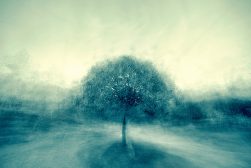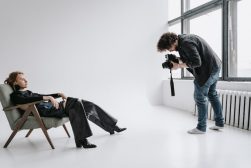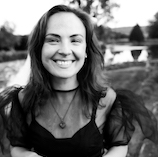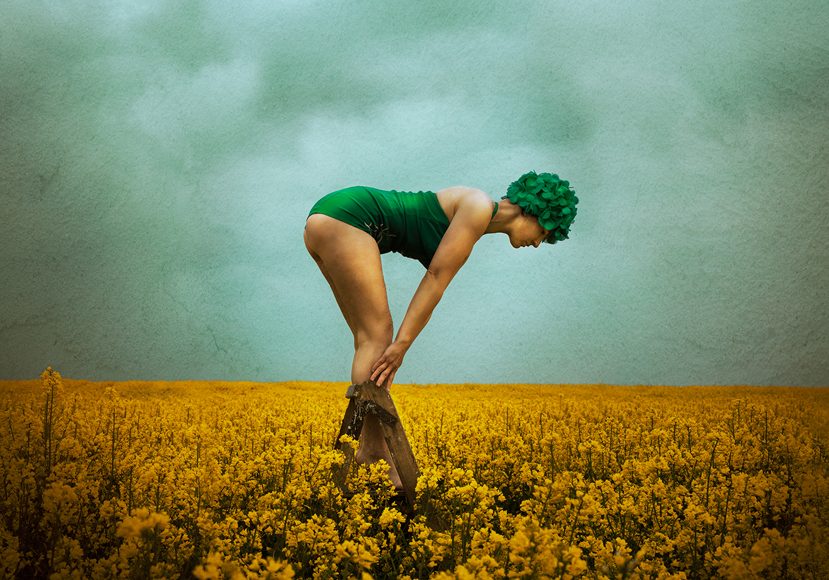
11 Tips for Capturing Authenticity in Self-Portrait Photography
Producing creative self-portraiture while remaining authentic and true to your vision is a challenge. Here are some tips to help you achieve it.
Imagine this: You’re standing in a crowded room with hundreds, no thousands, hundreds of thousands of people around you.
Many of these people are so incredibly cool. They wear incredible outfits that others glance at with admiration; colourful, chic; perhaps they look just how you’ve always wanted to look.
Some stand on their own stage, their voice carries far and wide with others listening to those words intently. What they talk about sounds interesting and engaging.
There is a lot of chatter though. The room is almost unbearably loud.

In a dream I saw the colour yellow by Veronika Lavey
You might think to yourself that no matter how much you try you’ll never be heard in all this noise. Maybe you look at yourself and can’t possibly see how on earth you could make yourself stand out and get noticed.
Then a light bulb flashes above your head. You need to be like the people around you: Unique! Original! Authentic! (oh, the irony…)
But it seems to you that everyone in this room has already picked all the available cool clothes, platforms, topics, style and they’re doing it so well…
If only there were an easy and quick solution to finding your own voice.
Well, the bad news is, there isn’t.
But wait!
The good news is that the whole process of finding your own original approach (not just in self-portrait photography but any art form) is part of the fun of finding your artistic voice.
This is where the juice is. This is where you build your foundations that will be strong enough to later inspire others.
Sure, it’s frustrating sometimes not to have it all straight away, but with a little guidance, I promise you’ll get there quicker.
- Related: How to take pictures of yourself
What does authenticity even mean?
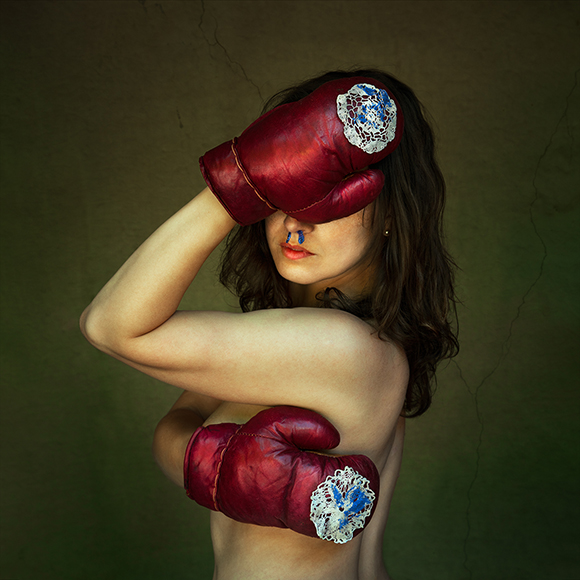
Royals by Veronika Lavey
In all art forms, including self-portrait photography, authenticity refers to being true to ourselves and our passions, reflecting on our own perspectives, experiences and values in life and our emotions and reactions towards these.
Sounds easy enough, right?
11 Tips on How to Start Finding Your Originality in Self-Portrait Photography
Tip #1 Ask yourself some big questions
Start by asking what it is about visual storytelling and, more specifically, self-portrait photography that interests you.
In fact, what are your interests in the first place?
You will find it much easier to base your self-portraits on a strong concept that you feel is uniquely you, if you have explored and identified what in life you’re curious about.
You will want to dive further and research the topic because it won’t feel like a chore. If you’re lucky, you might even find a passion in a subject. Then you’ll really be onto something!
I once wrote a list together to help me find my personal reasons for creating. I hope you will find it useful:
How Much Do You REALLY Know About Photography?! 🤔
Test your photography knowledge with this quick quiz!
See how much you really know about photography...

- Are you an optimistic or pessimistic person?
- Do you have any personal interests?
- What is your belief system (religious, spiritual, cultural, etc)?
- Do social issues interest you?
- What about politics?
- Do you find current events fascinating or emotionally evoking?
- Do you have a strong sense of identity (sexuality, gender, education, native country, race, etc)?
- What are your values, hopes, and sufferings?
- Do you have any obsessions?
- Where do you fit in the world?
This is some heavy stuff, but spending time on big questions like the above will yield the beginnings of your very own cup-of-you.
Later on, it will also help you answer the question: why do you create what you create?
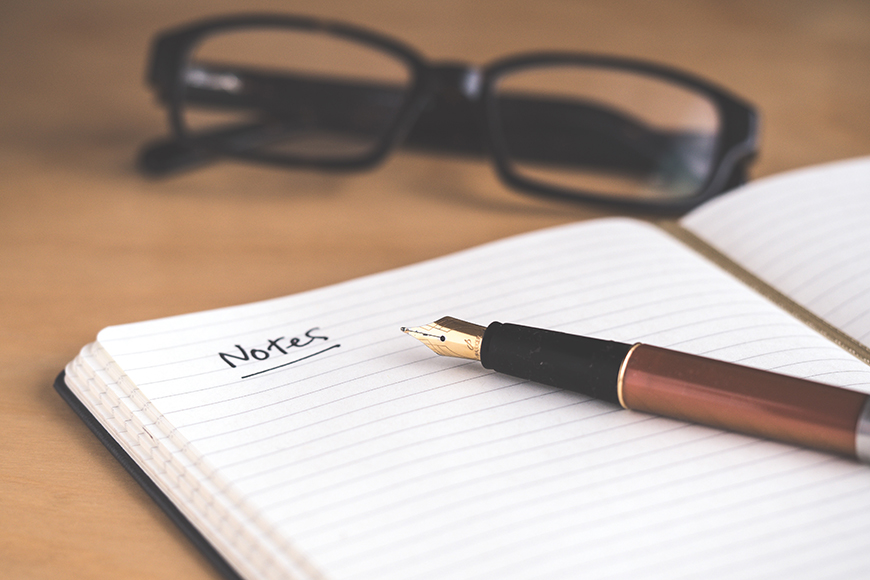
It’s helpful going through a list like this periodically.
Think of your uniqueness as something fluid. You certainly don’t have to stick to just one interest for the rest of your life.
We always change, evolve with our curiosity wandering.
Tip #2 Build a visual bank
Let’s be honest no one is born with the perfect visual style. None of us is born having a visual style at all, actually.
Sure, some people find it easier to hone in on what they like quicker than others, but a lot of us struggle at first.
One of the things that can separate confident creatives from those who feel lost, is allowing themselves to build and then saturate their visual banks with a diverse collection of art by artists of various mediums.
What do I mean by the visual bank? Think of different mediums as currency. Instead of pounds, dollars and euros, we have photography, painting, film, theatre, sculpture, textiles, etc.
Get a notebook or open a folder on your Instagram / phone / PC (this is your bank), and start saving any images (these are your currency) that whet your appetite.
I get huge amounts of inspiration from films, for example. I pay attention to the colour palette, the composition, the framing.
One of my favourite films visually is the French film Amelie, directed by Jean-Pierre Jeunet. The colours throughout are just divine, and while I don’t use the exact palette in my work, I’m certain it served as inspiration because I do have a tendency to use a lot of greens, oranges and reds.
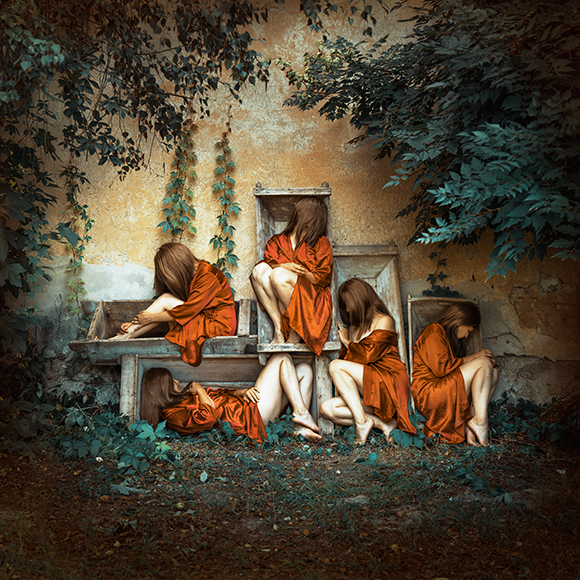
Building a visual bank is never about copying or trying to be like someone else. It’s about feeding your imagination and paying attention to what pleases you aesthetically, so you can figure out how to build your own authentic style.
Tip #3 Be careful!
So, you have your visual bank filled with wonderful works of art.
You have even found self-portrait photographers whose work you think is just magnificent.
Those creators seem to get everything right. They have a big following. They have deals with companies. They have sold out exhibitions.
A word of warning: Don’t start fixating on one person’s work. It will just lead to comparison and doom and gloom, making you feel like you don’t measure up. You’ll focus on them so much you’ll forget about you.
Trust me, I’ve been there, and it’s not pretty.
There is a fine line between inspiration and influence.
The former is where you lightly touch and observe what you like in already existing art to help keep imaginative.
The latter is where you might become a victim of copying a style in its whole because it seems so perfect.
Your objective isn’t to imitate. Your objective is to start thinking outside the box by seeing what can be done and start building from there with your own building blocks.
Tip #4 Pick ‘n’ Mix
You know the old-fashioned pick ‘n’ mix sweet shops? Walls of tubs filled with a million different tastes ranging from sour, sweet and bitter? You most likely have your favourites and then give a wide berth to others (liquorish… yuck!).
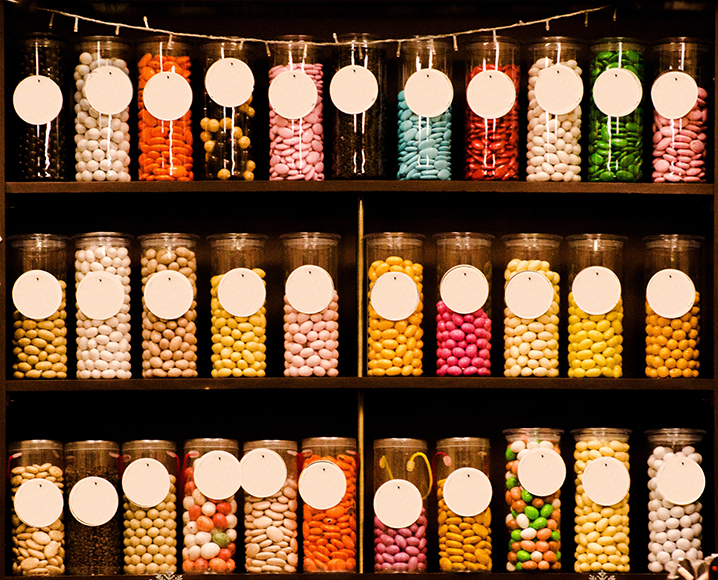
Doing the same with what you’ve observed in the art world will help you build your authenticity in self-portrait photography.
Like the look of black and white ala Francesca Woodman? Try it out. Did it work for you? Then keep at it.
Fancy dressing up as a character like Cindy Sherman? Try it out. Did it work for you?
Didn’t like working in a studio with artificial lighting? Drop it and avoid it in the future like liquorish.
Prefer not having to retouch your images in Photoshop? Practice getting most things right in camera.
Tip #5 Experiment
Authenticity in self-portraits comes from finding out your ‘whys’ and from having tried, tested and (sorry to say) failed at a lot of experiments.
Don’t be afraid to make mistakes. Mistakes are good! You’ll either know not to do it again because it didn’t work for you, or it will lead to something even better.
Maybe you’ll learn a new technique by having to fix something that had gone wrong. Maybe an accident will lead you to an approach that you’ve never seen anyone else do before.
Sometimes mistakes only become evident when someone else points them out to you. So be open to constructive criticism from trusted sources.
I have a group of fine art photographer friends who I trust completely to tell me if something doesn’t work in an image.
Of course, it is up to you to decide if you act on the feedback or ignore it.
Tip #6 Become vulnerable
Ouch. This one isn’t an easy one at all, but the discomfort will more often than not produce results.
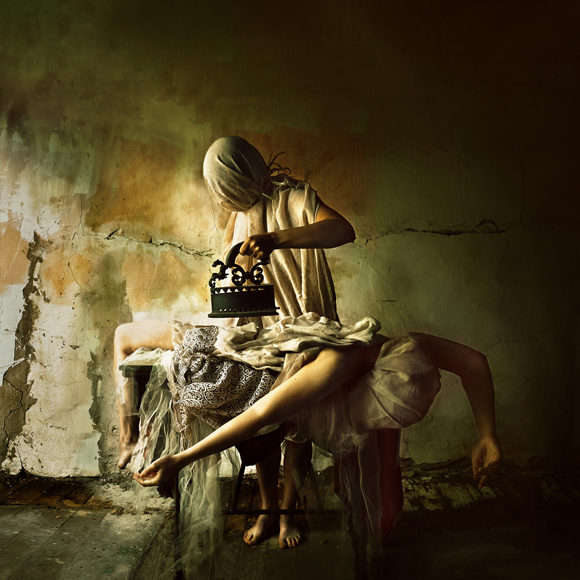
Under my hands by Veronika Lavey
It took me a long time to figure out what might drive my work forward. I felt I needed to answer the question: why on Earth am I creating what I’m creating?
Sometimes the answer can be simple: because I want to; because it makes me happy; because: “Just look at it! It’s so pretty!!”
All super valid reasons.
At the time, though, I needed to know more, so I took the advice in Tip #1 and asked myself a big question: What has happened in my past that challenged and therefore changed me in a significant way?
When you ask yourself this question, don’t assume it needs to be something traumatic. Anything that put you on a particular path of growth will do.
In my case, it was finding resilience and strength in hardship. More specifically, tearing up my roots, left my home country at a very young age and tried to find my identity again over the next few decades.
Yours might be something completely different:
- Parenthood: taking on new responsibilities, such as becoming a parent (think Sally Mann).
- Illness or injury: dealing with the after-effects of an accident can have a profound impact on a person (think Frida Kahlo)
- Coming of age: exploring your identity (think Jo Spence)
Through this self-exploration exercise, what’s important is to identify a change in your life, look at what lessons you were able to learn through that experience and find a way to communicate that to your audience.
Tip #7 Worry less
I need to be reminded of this often.
One of our biggest fears in our creative work is that “it’s all been done before”.
I actually agree with that statement. It has most probably all been done before.
We’ve been shocked, we’ve experienced artists’ torment, we’ve seen the wheel reinvented a thousand times and surely our predecessors have broken all the rules and rebelled in times when there weren’t as many artists to contend with as there are today.
Ok, so how about this?: For a start, you’re in a lucky enough position to have chosen the genre of self-portraiture. That means you’re already working with something that’s one in 7.9 billion: yourself!
You’re worried you won’t have a unique thought?
Maybe you won’t as such, but you can certainly remain original!
What another person thought of 10 seconds, 5 months or 60 years ago, quite frankly, has nothing to do with you as long as your concept came to you organically, through your own personal experiences and curiosity.
Then it’s yours to do with as you, please. Catch it, squeeze it, and nurture it into something that’s uniquely your own.
Tip #8 Create with emotion
Here is an equation: believability + relatability = authenticity + connection
Following your truth and creating with the emotions those truths unearth will help you make work that’s believable.
Faking something for the sake of following a trend or trying to imitate someone else’s work can be very transparent, not to mention exhausting and hard to keep up.
Who has the energy for that kind of nonsense?
It’s that invaluable time you’ll spend understanding your ‘big questions’ that will allow you to stay true to yourself.
I can tell you, it’s an incredibly liberating feeling knowing what your message is and where your work stems from.
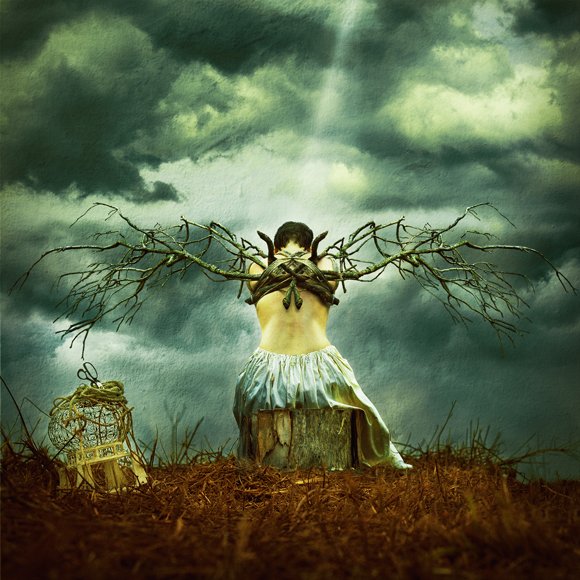
Seeking the lightness of freedom by Veronika Lavey
Anyone who might question you in the future will get an honest answer to what drives your creativity.
The added benefit will be that those experiences and world views in life will produce work that people will be able to relate to because, ultimately, we’re all navigating through the same stories of joy, pain, hope, sorrow and everything in between.
Through my personal experiences of finding resilience in hardship and depicting those stories as self-portrait photographs, I was able to create connections with my audience, who also had to find their strength on their own journeys.
Those journeys may have been somewhat different to mine, but it was the emotions attached that would have been very similar.
It was the genuine emotions that connected us.
Tip #9 Be selective on social media
You already know how social media has its pros and cons. I won’t go into the topic in depth here, but while allowing to enjoy the benefits of virtual networking worldwide and some delicious inspiration, social media can also hinder your authentic voice.
How?
By stopping it altogether.
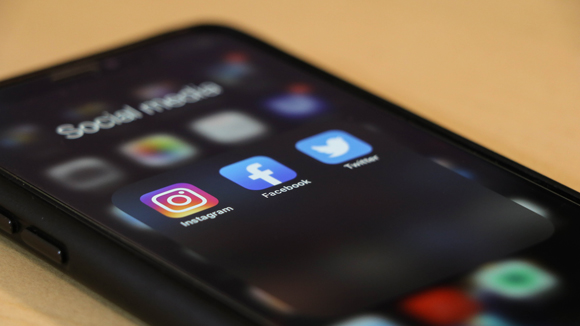
I hit a complete creative block some time ago because all I saw was how wonderful, productive and successful everyone was in my field, and I had no more mental space to make progress on my own creative work.
This wasn’t fixating on one other person’s greatness, as we discussed in Tip #3. This was being bombarded from all sides.
I appreciated the talent of others, but constantly staring at my screen was overstimulating and overwhelming, which led to a lack of focus and limited creative capacity.
Some people are natural at making reels and TikTok videos. Some people aren’t.
If you’re in the second group (Hi and welcome!), you could be constantly fretting about the need to perform, produce and share content to keep up, but in the end, you might just feel completely drained by the effort it all takes.
My solution was to mute accounts that awakened the ‘Beast of Comparison’ in me. I would still check in from time to time and offer support, but my feed wasn’t saturated with too much distraction anymore.
Oh, and shall we quickly mention the dangers of seeking validation on social media?
Looking for approval for your work by worrying about how many likes or comments you get on your precious creation can be detrimental to your creativity and lead to creative blocks also.
Don’t let numbers stifle your voice.
Tip #10 Practice
Earlier, I touched on the topic of being careful not to imitate others’ styles or creative voices.
This is absolutely true for when you start releasing your work into the world. However, when you’re learning and are within the privacy of your own ‘four walls’, it’s a completely different matter.
You get initial inspiration and start learning from those who came before you. That’s just facts.
You’re surrounded by art everywhere you look: the films you watch, the music you listen to, the books you read, and the billboards you see alongside our roads.
If something grabs your imagination you might want to try and recreate it, not to later show that work as your own (please don’t do that), but to practice the techniques and to see if you can master them.
That’s a good thing!
Whittling down to make the unique cup-of-you, is part of this process.
Practice is essential for any skill, including photography, writing, painting, flying planes or medical surgery.
By exercising your mind regularly in your chosen field, you will develop specialist muscle memory and confidence in your abilities, which will in turn help lead to your authentic voice.

Tip #11 Bonus Believe in your vision
Developing an authentic voice takes time and determination.
Discipline and tenacity are essential to push through creative blocks. They’re necessary to find your originality and to stick with it too. After all, you’re in it for the long haul, right?
One of the best ways of making sure you’ll knuckle down and patiently carry on, is by believing in yourself and your vision.
You think that sounds a bit cliché? You’re right. But it’s still true.
By believing your vision is worthy of producing, worthy of celebrating and showing to other people, you allow yourself to bring forward your honesty and sincerity.
This can help you create a body of work that you can call your very own and be ever so proud of.
Ultimately, this is what will set you apart from everyone else.
Self-portrait photography is about self-expression. What better way of championing this than believing in yourself and your vision, which is now your authentic artistic voice?
Imagine yourself in that crowded room again.
You know the one you imagined at the beginning of this article?
When you look around now and see everyone doing their thing, you can do a little happy dance because you know that no matter how many people are around you, you are your own person with your own ideas, life views, likes and dislikes.
These are some of what help make up your authentic voice that not one person in this room will have quite the same.

Check out these 8 essential tools to help you succeed as a professional photographer.
Includes limited-time discounts.
Veronika Lavey is a multi-cultural artist specialising in conceptual self-portraiture. She is recognised for her dark, thought-provoking fine art photography.
When Veronika doesn’t have a camera or a paint brush in her hands, she’s most likely walking her giant fluffy dog, Sonic in the woods, or hanging out with her family.








